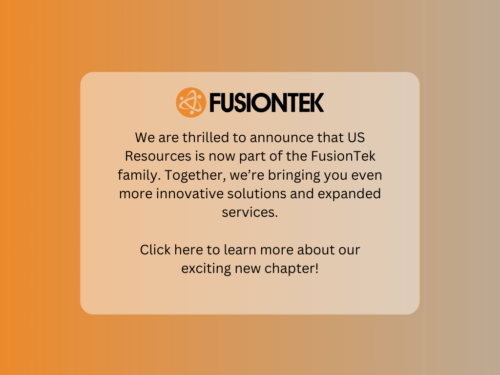In a world hyper-connected by technology, businesses and individuals alike interact with devices of all kinds on a daily basis. These devices, known as endpoints, are crucial for productivity but also represent significant security risks.
In this guide, we’ll explore the various facets of endpoint protection, why it is essential, and how you can safeguard your digital footprint effectively.
What Exactly Is an Endpoint?
Endpoints are any devices that connect to a network, enabling communication and data exchange, because they serve as the final point of access where data enters or exits a network.
Examples include laptops, smartphones, tablets, desktops, servers, and even Internet of Things (IoT) devices like smart thermostats and medical equipment. Each of these devices can be a potential entry point for cyber threats if not adequately protected.
What Is Endpoint Protection?
Endpoint protection encompasses a set of cybersecurity practices designed to secure endpoints from malicious activities. Since every device is a potential entry point for a cyber attack, these practices are essential to safeguard your digital assets, sensitive information, and personal privacy.
Unlike general cybersecurity measures, such as network security which focuses on safeguarding data in transit, or firewalls that protect the network perimeter, endpoint protection focuses specifically on securing individual devices. This granular approach is critical because it addresses vulnerabilities unique to each device.
Why Endpoint Protection is Crucial
Unsecured endpoints can lead to severe consequences, including data breaches, financial losses, and reputational damage. For instance, a compromised laptop can become a gateway for hackers to access sensitive corporate data, resulting in costly breaches and legal implications.
70% of successful breaches originate at endpoints, and with cyber threats constantly growing more sophisticated, effective endpoint protection is a necessity to mitigate these risks, especially with remote work. It ensures that devices are not only shielded from malware and ransomware but also constantly monitored for suspicious activities.
Types of Endpoint Security
Various types of endpoint security solutions are employed to safeguard endpoints effectively. Here, we discuss 10 different types, each playing a unique role in fortifying devices:
1. Endpoint Detection and Response (EDR)
EDR solutions continuously monitor endpoints to detect and respond to threats in real-time. They provide visibility into endpoint activities, enabling quick identification and mitigation of potential attacks.
2. Extended Detection and Response (XDR)
XDR extends the capabilities of EDR by integrating data from multiple sources, including endpoints, networks, and servers. This holistic approach enhances threat detection and response capabilities.
3. Intrusion Detection and Prevention Systems (IDPS)
IDPS solutions monitor network traffic to identify and block potential intrusions. By analyzing patterns and behaviors, they can thwart attacks before they infiltrate endpoints.
4. Data Loss Prevention (DLP)
DLP tools prevent unauthorized access to sensitive data by monitoring and controlling data transfers. They ensure that critical information remains secure, even when accessed from endpoints.
5. Network Access Control (NAC)
NAC solutions enforce security policies on devices accessing the network. They ensure that only compliant and authorized endpoints can connect, reducing the risk of compromised devices.
6. Application Whitelisting and Blacklisting
Application whitelisting allows only approved applications to run on endpoints, while blacklisting blocks known malicious software. This approach minimizes the risk of unauthorized or harmful applications.
7. Antivirus and Anti-Malware
Traditional antivirus and anti-malware programs scan and remove malicious software from endpoints. While basic, they are fundamental components of endpoint security.
8. Mobile Device Management (MDM)
MDM solutions manage and secure mobile devices used by organizations, ensuring that corporate data on smartphones and tablets remains protected. They enable remote wiping of data in case of device loss or theft.
9. Encryption
Encryption tools protect data by converting it into unreadable code. Even if data is intercepted, it remains inaccessible without the decryption key.
10. Patch Management
Patch management ensures that endpoints are always updated with the latest security patches. This reduces vulnerabilities that could be exploited by attackers.
Choosing the Right Endpoint Protection Solution
Selecting the right protection depends on several factors:
- Business Size and Industry: Smaller businesses may require more straightforward, easy-to-manage solutions, while larger enterprises need comprehensive systems capable of handling high volumes of data and numerous devices. Additionally, industry-specific regulations and standards can dictate certain security measures, such as HIPAA for healthcare organizations.
- Key Features to Look For: Look for key features such as real-time threat detection, incident response capabilities, and data loss prevention. Solutions with integrated modules like encryption, patch management, and mobile device management are also advantageous because they provide robust and multi-faceted protection.
- Scalability: Choose a solution that can grow with your business. Opt for platforms that support easy scalability, feature frequent updates, and offer comprehensive support services. By selecting a solution that evolves with your needs, you can ensure sustained security and better protect your digital environment against emerging cyber threats.
Explore Comprehensive Security with US Resources
Having a robust endpoint protection strategy is essential for maintaining the integrity and security of your business operations. So if you’re looking for a comprehensive solution that safeguards your endpoints and network, US Resources has you covered.
Our suite of cybersecurity services at US Resources includes managed security and consulting to help you stay ahead of cyber threats and protect your valuable digital assets. Ready to take the next step? Contact us today to see how we can help secure your business.


